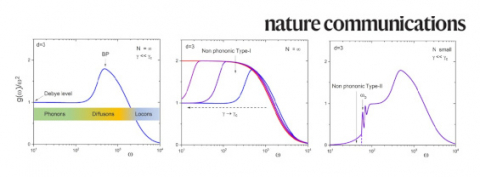Groundbreaking Research Reveals the Nature of Non-Phononic Excitations in Disordered Systems

An international collaboration between scientists, most of them from the Department of Physics at Sapienza, has made a significant breakthrough in understanding the intricate dynamics of disordered systems, shedding light on the nature of non-phononic excitations in glasses. Their findings, published in Nature Communications, provide crucial insights into the fundamental behavior of materials at the atomic scale.
The paper, titled "The nature of non-phononic excitations in disordered systems," authored by Walter Schirmacher, Matteo Paoluzzi, Felix Cosmin Mocanu, Dmytro Khomenko, Grzegorz Szamel, Francesco Zamponi, and Giancarlo Ruocco, presents a comprehensive analysis of the frequency scaling exponent of low-frequency excitations in glasses where traditional wave behavior (phonons) is absent.
One of the central mysteries in the field has been the frequency scaling exponent which governs the density of states of these non-phononic excitations. Ranging between 2 and 5, this exponent has puzzled scientists and sparked intense debate over its origins and implications.
The team's groundbreaking research, conducted through the lens of heterogeneous-elasticity theory, has uncovered crucial insights into these enigmatic phenomena. They demonstrate that in marginally stable glass samples, the density of states follows a Debye-like scaling, characterized by an exponent of 2. Moreover, they identify these associated excitations, termed "type-I," as random-matrix type, providing a deeper understanding of their underlying mechanics.
Furthermore, the researchers extend their analysis to more stable samples, revealing the prevalence of a different type of excitation, labeled "type-II." These non-irrotational oscillations are intimately linked with local frozen-in stresses within the material. Importantly, the frequency scaling exponent of these excitations is intricately governed by the statistics of small stress values and varies depending on the specifics of the interaction potential.
As scientists continue to unravel the mysteries of disordered systems, this study stands as a landmark contribution to our understanding of the fundamental physics of glasses.
